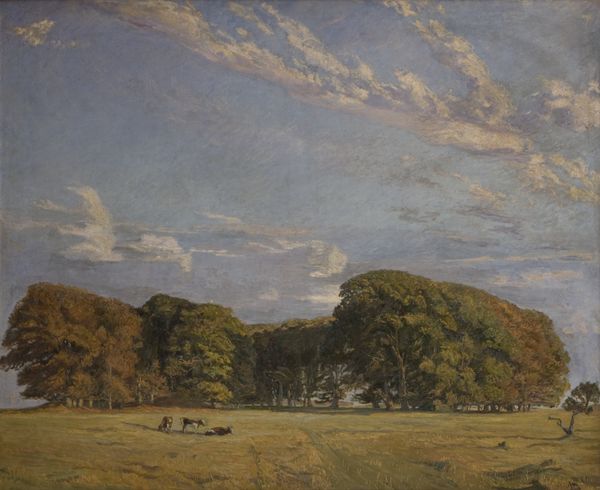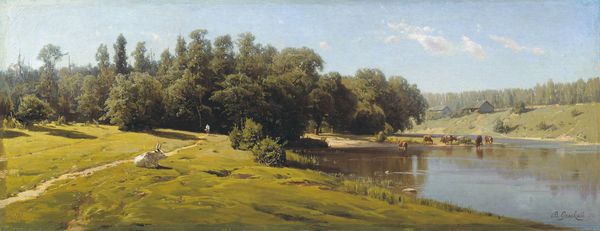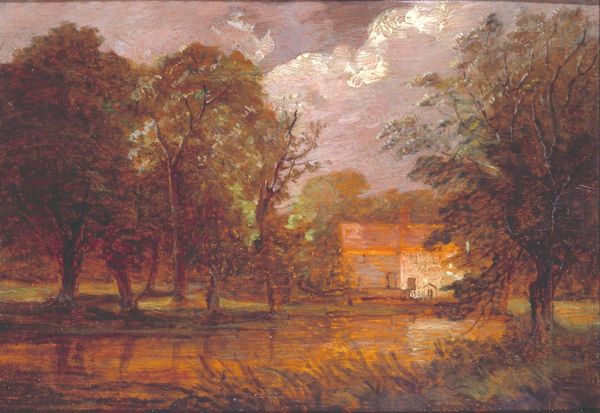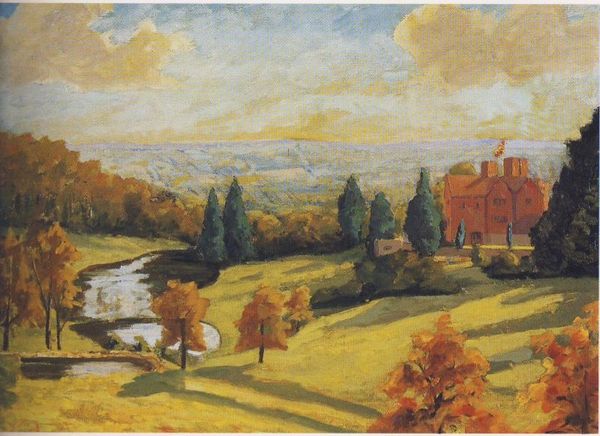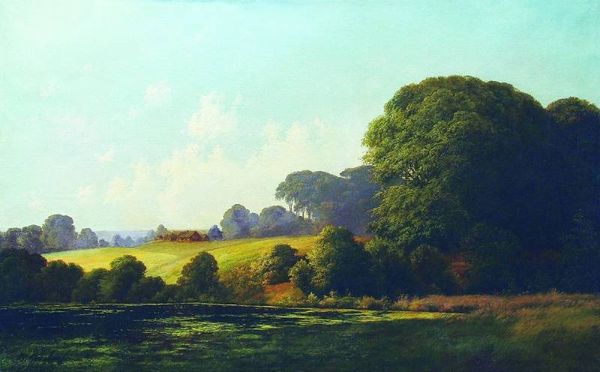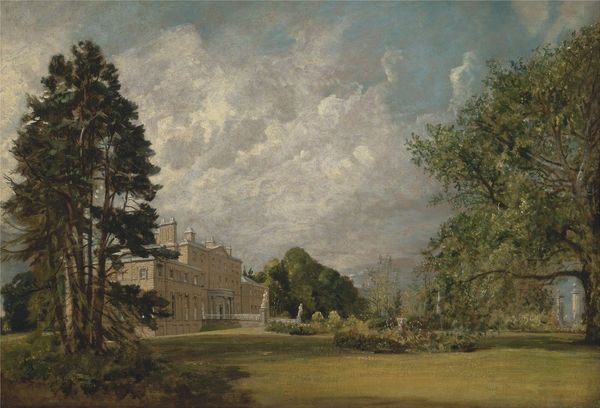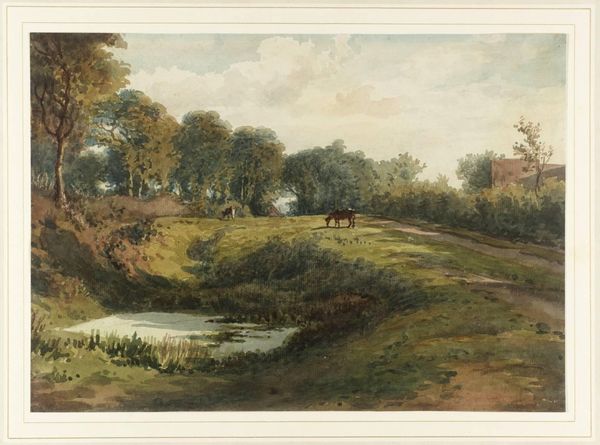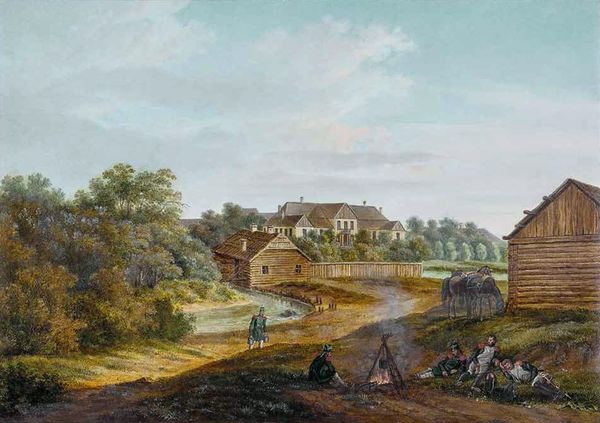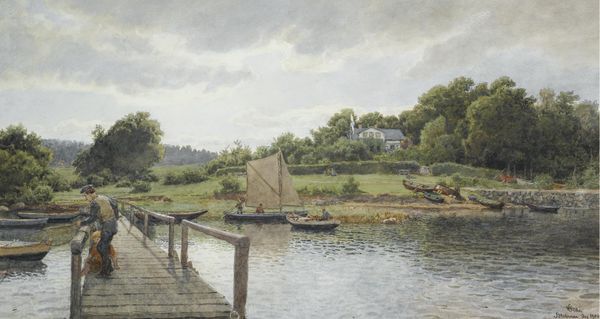
plein-air, oil-paint
#
plein-air
#
oil-paint
#
landscape
#
oil painting
#
romanticism
#
realism
Copyright: Public Domain: Artvee
Editor: This is John Constable’s “Wivenhoe Park, Essex,” painted in 1816. It's oil on canvas and captures this idyllic scene. The detail is striking, especially in the sky and the water's reflections. It feels incredibly peaceful, almost staged, like a perfect vision of rural life. What strikes you when you look at it? Curator: The layering of symbols. Constable wasn’t simply capturing a scene; he was constructing a vision of England, touching on themes of land ownership and social order. Notice how the estate house is centrally placed but distant, overseeing the scene. The swans signify grace and aristocratic bearing, whereas the cows, though peacefully grazing, signify ownership and commerce. Editor: So you see a kind of narrative playing out through these images? It feels almost too picturesque to be real life! Curator: Indeed. Consider the fence in the foreground. It demarcates space, establishes boundaries – psychological as well as physical. Do you get a sense of exclusion here, or invitation? Editor: Hmm, both, maybe. The fence almost leads your eye into the painting, but it's still a barrier of sorts. The social aspect never really occurred to me. I saw serenity; now I sense subtle layers of ownership and privilege, things hidden in plain sight. Curator: That’s the key – the beauty of art invites questioning and unpacking symbols. The continuous dialogue between image and observer breathes fresh air to what seems merely decorative. And consider Constable's dedication to capturing light. Each dab and brushstroke suggests nature is not simply scenery; it mirrors our changing states of consciousness. Editor: That is a fantastic interpretation! I can now appreciate the complexity behind this seemingly simple landscape.
Comments
No comments
Be the first to comment and join the conversation on the ultimate creative platform.
